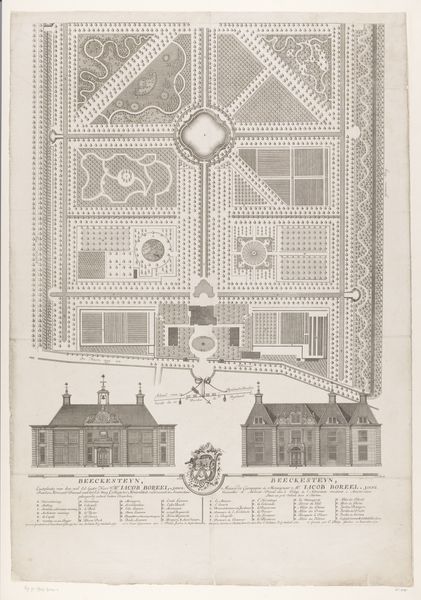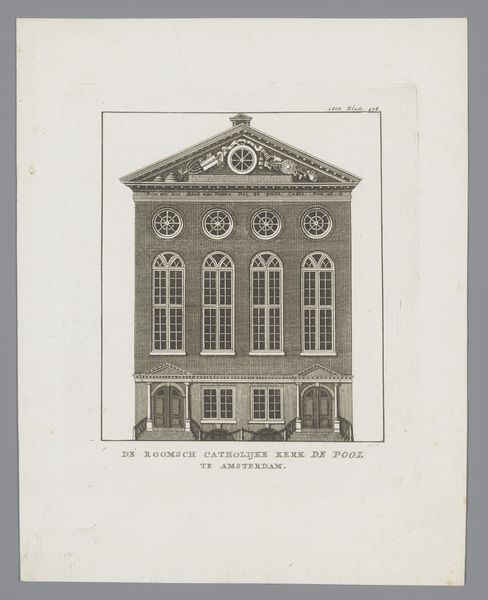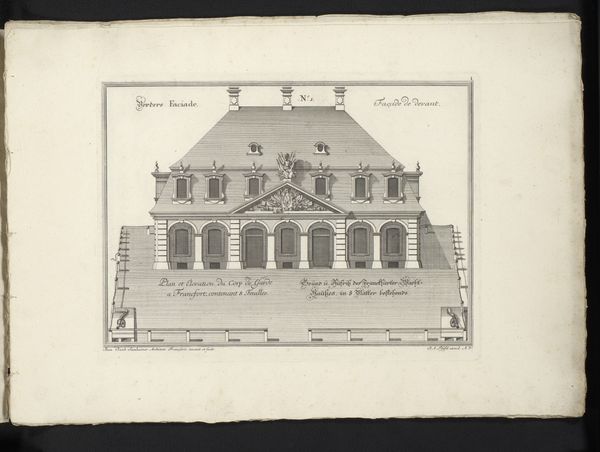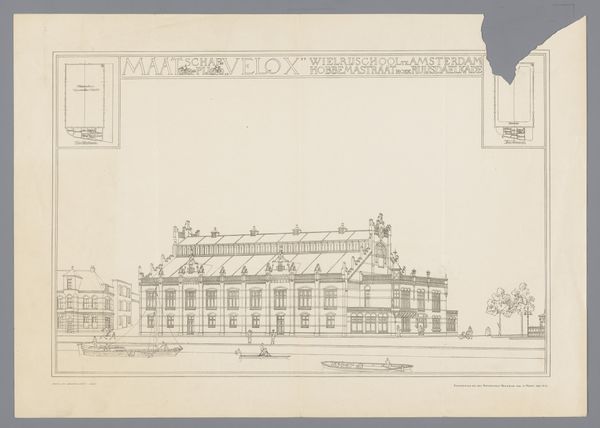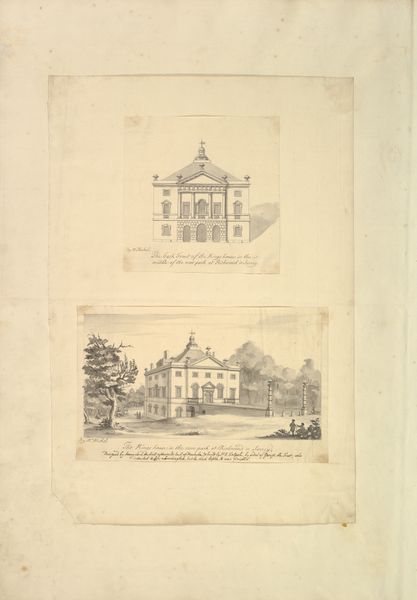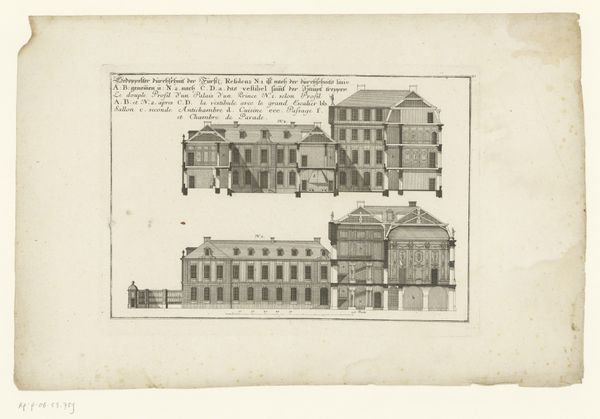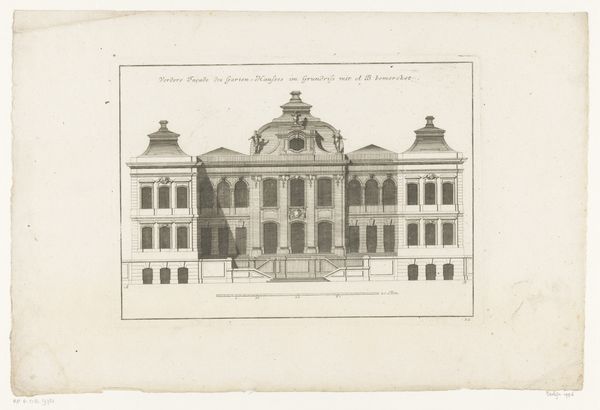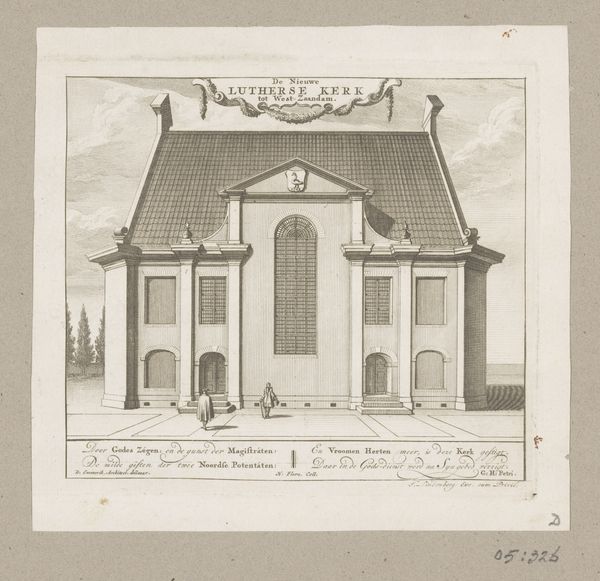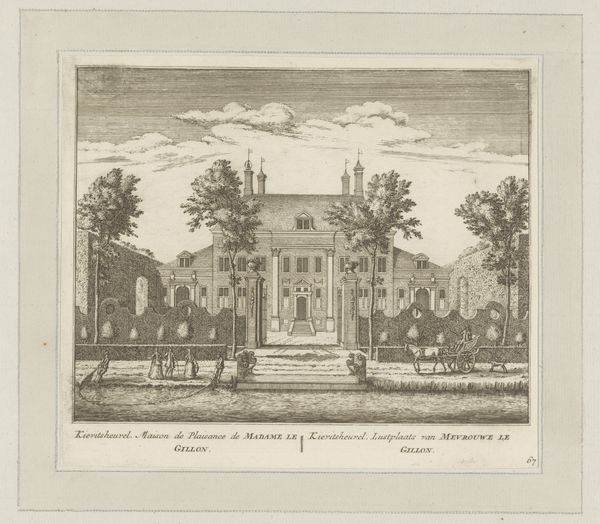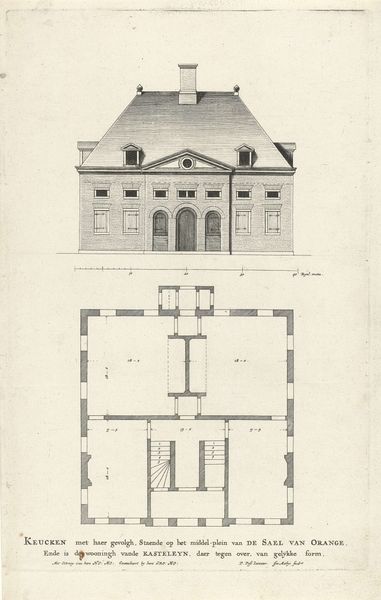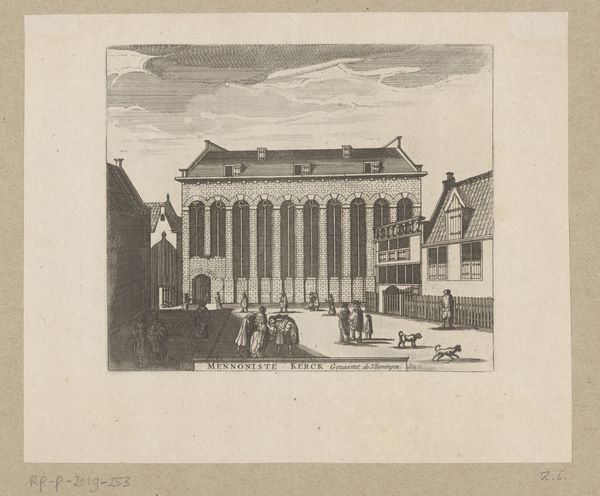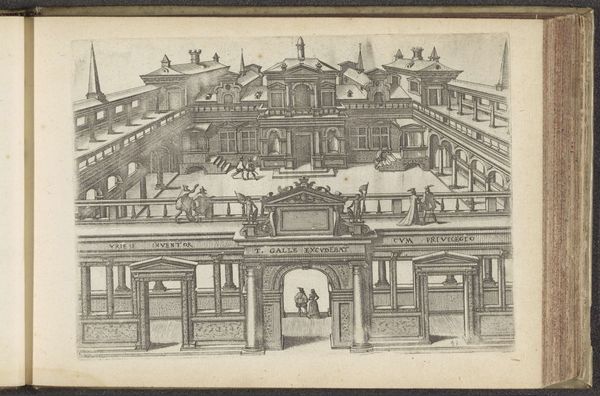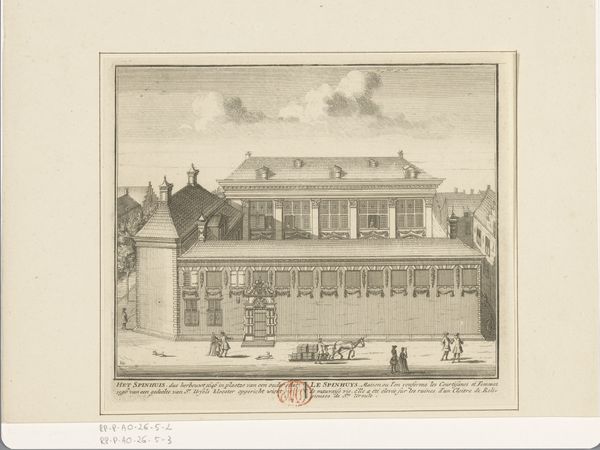
Reproductie van tekeningen uit 1640 en 1884 van de Lakenhal te Leiden 1885
0:00
0:00
Dimensions: height 351 mm, width 251 mm
Copyright: Rijks Museum: Open Domain
This print by Wegner & Mottu reproduces drawings from 1640 and 1884 of the Lakenhal in Leiden, offering a fascinating glimpse into Dutch history and its evolving relationship with labor and industry. The Lakenhal, or cloth hall, was the center of Leiden's textile industry, one of the most important in the Dutch Golden Age, and the drawing invites us to consider the socio-economic structure of the 17th century, where the textile trade shaped identities and power dynamics. The print captures the building across nearly 250 years, reflecting changes in architectural style and urban development. While the drawings present a seemingly straightforward architectural record, it’s important to remember that the textile industry relied on a complex system of labor, often exploiting women and children. In the first drawing, it is easy to imagine the building bustling with merchants, artisans, and laborers, each playing a role in the creation of the famed Leiden cloth. This print, in its own way, invites us to reflect on the stories and histories embedded in the built environment. It encourages us to consider the ways in which buildings like the Lakenhal have witnessed and shaped the lives of individuals and communities over time.
Comments
No comments
Be the first to comment and join the conversation on the ultimate creative platform.
